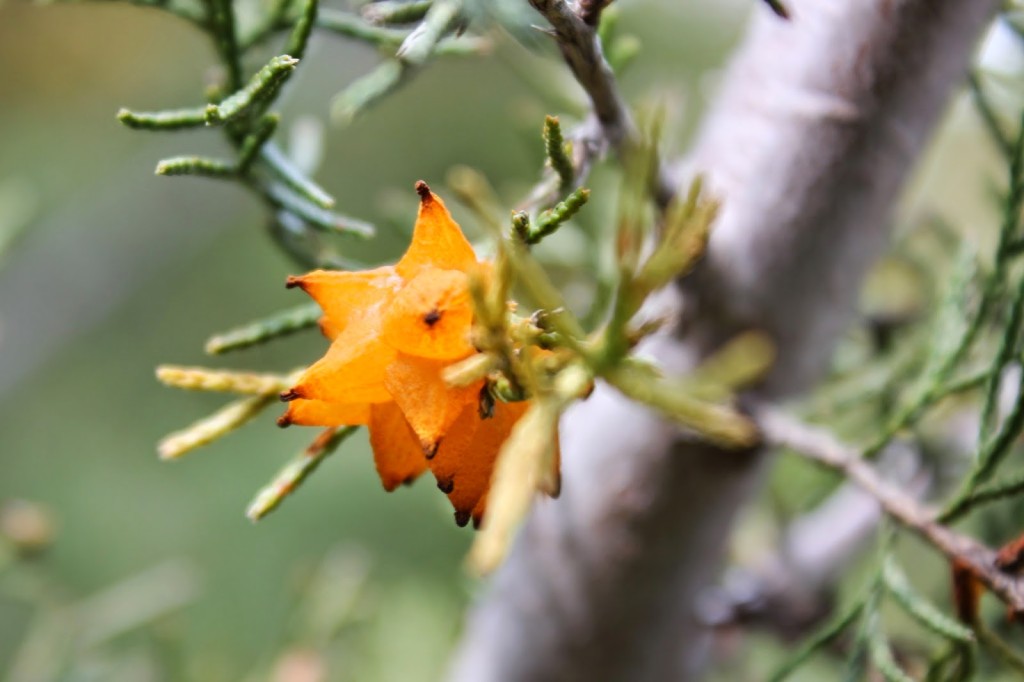Cedar-apple rust (or hawthorne, or quince, etc) is one of the most alien looking natural wonders that I have witnessed in my area. A multiple host disease, it passes back and forth between eastern red cedar and apple. It affects other trees in that family here as well. The cedar stage involves the formation of these bright orange, gelatinous tendrils coming forth from a dark brown gall-like sphere in the spring months. Red cedar doesn't seem to come to harm from it, though the other host will develop protrusions of its own on its leaves and continually defoliate. We've had problems with hawthorne trees in the landscape due to this… they just don't do well.
The fruiting structures are fascinating, though! I love observing them. The first year I noticed this disease was a very prolific year for the structures, and I remember just being awestruck!
Rusts don't fall into the same group as the other things knitted for this project, but they're still in Kingdom Fungi so I think that's close enough--don't you? If anyone has photos they have taken of cedar apple rust in its fullness, please post one on my Facebook wall and I will share it with the page! We didn't get much rain this spring, so the ones I saw (below, at the bottom of the post) had already dried up by the next time I went out.
An added bonus: Here is what the eastern red cedar stage looks like when the fruiting structure is just starting to form!




